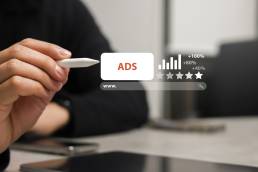Paid advertising has come a long way from static banners and basic keyword targeting. In today’s digital ecosystem, platforms are smarter, users are savvier, and the rules are constantly shifting — especially with the rise of AI, evolving privacy regulations, and an increasingly fragmented media landscape.
For brands looking to grow in 2025 and beyond, the question isn’t if they should invest in paid media — it’s how to do it smarter. Success now depends on more than just budget size; it’s about strategy, adaptability, and the ability to harness tech without losing the human touch.
In this article, we dive into the advanced tactics and best practices that are shaping paid advertising right now — from embracing automation to designing creatives that convert.
1. Mastering the Fundamentals
a. Paid vs. Organic: Roles & Benefits
-
Paid search (Google Ads, Bing Ads) captures high-intent users at the moment of search, boosting conversions.
-
Paid social (Facebook, Instagram, TikTok, LinkedIn) excels at creating demand and brand awareness.
-
Display, native, and video ads help extend reach, especially for top-of-funnel audiences.
This multi-channel approach ensures both short-term ROI and sustained brand presence.
b. Key Advantages
-
Rapid reach: Instantly drive targeted traffic.
-
Precise targeting: Use demographics, interests, and intent-based signals.
-
Measurable results: Track clicks, conversions, engagement, attribution.
-
Budget control: Define daily caps, bid strategies, and pacing.
c. From Concept to Launch
A structured workflow ensures ads are strategic and effective:
-
Define goals (awareness, leads, sales).
-
Identify audience segments.
-
Select platforms based on objectives.
-
Conduct keyword research and creative planning.
-
Build campaigns with tight ad group organization.
-
Launch, track results, and iterate.
2. Advanced Tactics & Best Practices
a. Embrace Automation & AI
The advertising landscape is evolving faster than ever — and automation is no longer a “nice to have,” but a competitive necessity. AI-powered tools can now manage bids, optimize budgets, predict audience behavior, and even generate creatives more efficiently than traditional manual setups.
Smart bidding strategies, predictive analytics, and AI-enhanced audience segmentation allow marketers to deliver more relevant ads with less guesswork. Platforms like Google Ads and Meta Advantage are rapidly expanding their automation features — and brands that learn to guide and refine these tools, rather than resist them, consistently outperform their competitors.
However, success with automation doesn’t mean setting it and forgetting it. The key is to combine machine intelligence with human insight. That means continuously monitoring performance, setting clear guardrails, and using data to train algorithms toward your specific business goals.
In short: Let the machines crunch the numbers, but keep your hands on the wheel.
b. Combat Privacy Changes
As third-party cookies disappear and tracking restrictions tighten, advertisers must shift focus to first-party data, consent-based targeting, and privacy-safe measurement. Building trust while maintaining performance is now part of the strategy.
c. Optimize Cross-Platform Budgets
Consumers move fluidly across channels — your budget should too. Use performance data and attribution models to allocate spend dynamically between platforms like Google, Meta, and TikTok, where ROI is strongest.
d. Hone Audience Targeting
Precision targeting isn’t just about demographics anymore. Layer in behavioral signals, intent data, and custom audiences to reach the right people with the right message — without over-segmenting or wasting spend.
e. Sharpen Ad Quality (Search Ads)
In search advertising, clarity and relevance win. Improve Quality Scores by aligning keyword intent with ad copy and landing pages, ensuring your ads are useful, fast-loading, and mobile-friendly.
f. Design Engaging Creatives
Thumb-stopping visuals and clear calls-to-action are essential in a crowded feed. Use motion, bold headlines, and platform-native formats to drive attention and test relentlessly to find what actually converts.
g. Test, Learn, Iterate
Implement A/B testing for headlines, visuals, formats, and audience segments. Continuously pause underperforming ads and expand winners.
3. 2025 Trends to Watch
1. Short‑Form Social Video
TikTok, Instagram Reels, and YouTube Shorts are dominating engagement—ideal for attention-grabbing promos.
2. Increased Authenticity
Younger audiences crave genuine content over polished ads. Encourage user-generated content and real voices
3. Nano-Influencers & Micro-Moments
Smaller creators offer better engagement and affordability. Almost informal endorsements feel more credible than big celebrity shout-outs .
4. Operating with Privacy in Mind
Expect stricter policies on tracking—relying on first-party data, contextual targeting, and transparent practices is key .
5. AR/VR & Immersive Formats
Brands are experimenting with interactive ads—augmented reality filters, 360° video, and gamified experiences .
6. Hyper‑Localization & Sustainability Messaging
Ads tailored to local events, values, or values-driven themes like environmental sustainability resonate well .
7. AI‑Driven Ad Placement in Search
Google’s AI Overviews are starting to feature more ads. Brands must adjust to new ad spaces and smarter bid strategies.
4. Balancing Brand & Performance
According to Teads’ Cannes insights, advertisers now seek platforms that deliver measurable performance yet drive brand awareness through creative, premium placements (nypost.com).
Adopting a full-funnel mindset—leveraging both walled gardens and open-web DSPs—helps brands stay resilient and diversified.
5. Measuring Success (Beyond Clicks)
Tracking clicks is just the beginning. A robust analytics framework includes:
-
In-platform metrics (CTR, CPA, ROAS)
-
Pixel/UTM data tied to Google Analytics or CRM
-
Post-conversion LTV and cohort analysis
-
Cross-platform attribution for deeper insight
Look into server-side tracking and CAPI for accuracy as browsers restrict cookies.
The paid advertising playbook is being rewritten — not just by platforms, but by changing user behaviors, tighter regulations, and smarter technology. Brands that thrive are those that stay curious, test relentlessly, and balance automation with strategic intent.
As we look ahead, the most successful campaigns will be the ones rooted in real insights, powered by AI, and built for humans — not just algorithms.
Paid advertising in 2025 isn’t just about visibility. It’s about clarity, creativity, and delivering value in every click.
Ready to level up your paid media strategy? Let’s talk.



